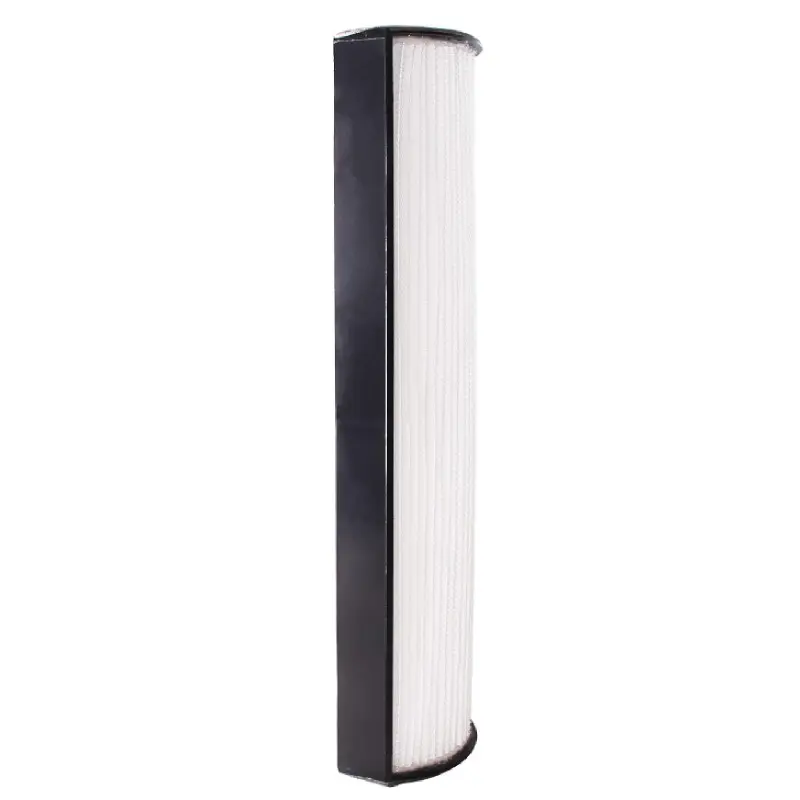Understanding the Power of Carbon Filtration Technology
The quest for cleaner, fresher indoor air has led many to discover the remarkable capabilities of activated carbon air filters. These sophisticated filtration devices have revolutionized how we combat indoor air pollution and unwanted odors. By harnessing the natural adsorption properties of activated carbon, these filters have become an indispensable tool in maintaining superior air quality in homes, offices, and industrial settings.
Activated carbon air filters utilize a highly porous form of carbon that's been treated to maximize its surface area and adsorption capabilities. This specialized material works by attracting and trapping airborne molecular compounds responsible for unpleasant odors, gases, and various volatile organic compounds (VOCs). The result is a noticeable improvement in air quality and a significant reduction in unwanted smells.

The Science Behind Activated Carbon Filtration
Chemical Structure and Adsorption Process
The effectiveness of activated carbon air filters lies in their unique molecular structure. During the activation process, countless microscopic pores are created within the carbon material, resulting in an incredibly vast surface area. A single gram of activated carbon can contain up to 3,000 square meters of surface area, providing exceptional capturing capacity for airborne pollutants.
The adsorption process occurs when contaminated air passes through the activated carbon filter. Molecular pollutants are attracted to the carbon's surface through van der Waals forces, becoming trapped within the porous structure. This process is different from absorption, as the contaminants adhere to the surface rather than being absorbed into the material itself.
Types of Pollutants Captured
Activated carbon air filters excel at capturing a wide range of airborne contaminants. Common substances effectively removed include tobacco smoke, cooking odors, pet odors, and household chemical fumes. These filters are particularly effective against volatile organic compounds (VOCs) emitted from cleaning products, paints, and building materials.
The filtration system also shows impressive results in removing gaseous pollutants such as benzene, formaldehyde, and other harmful chemicals that traditional mechanical filters might miss. This comprehensive approach to air purification makes activated carbon air filters an essential component in modern air quality management systems.
Performance Factors and Efficiency
Contact Time and Air Flow
The effectiveness of activated carbon air filters depends significantly on the contact time between contaminated air and the filter medium. Longer contact periods allow for better adsorption of pollutants. This is why proper sizing of the filter system and appropriate air flow rates are crucial for optimal performance.
Air flow management plays a vital role in filter efficiency. Too high an air flow rate can reduce contact time and diminish filtration effectiveness, while too low a rate might not process enough air to maintain good indoor air quality. Finding the right balance is essential for maximizing the filter's odor-removing capabilities.
Environmental Conditions Impact
Temperature and humidity levels can affect how well activated carbon air filters perform. Higher humidity levels may reduce the filter's capacity to adsorb certain pollutants, as water molecules compete for binding sites on the carbon surface. Temperature variations can also influence the adsorption process, with moderate temperatures typically providing optimal performance.
Regular monitoring of environmental conditions helps maintain peak filter efficiency. Understanding these factors allows users to adjust their systems accordingly and ensure consistent air purification performance throughout varying seasonal conditions.
Maintenance and Longevity Considerations
Filter Replacement Timing
To maintain optimal performance, activated carbon air filters require regular replacement. The frequency depends on various factors, including air quality conditions, usage patterns, and the specific type of filter installed. Most manufacturers recommend replacement every 3-6 months, though heavy contamination may necessitate more frequent changes.
Users can monitor filter performance by paying attention to odor levels and air quality. When the filter's effectiveness begins to decline, it's typically because the carbon has reached its adsorption capacity. Timely replacement ensures continuous protection against airborne pollutants and maintains optimal indoor air quality.
Maximizing Filter Lifespan
Several strategies can help extend the life of activated carbon air filters while maintaining their effectiveness. Pre-filtering larger particles, controlling humidity levels, and ensuring proper installation all contribute to longer filter life. Regular maintenance of the entire air handling system also helps preserve filter performance.
Professional inspection and cleaning of the filtration system can identify potential issues before they affect filter performance. This proactive approach not only extends filter life but also ensures consistent air quality improvement throughout the filter's service period.
Practical Applications and Benefits
Residential Uses
In home environments, activated carbon air filters prove invaluable for maintaining fresh, clean air. They effectively combat common household odors from cooking, pets, and everyday activities. These filters are particularly beneficial in homes with sensitive individuals, such as those with allergies or respiratory conditions.
The versatility of activated carbon air filters makes them suitable for various residential applications, from whole-house systems to portable air purifiers. Their ability to remove both particulate matter and gaseous pollutants provides comprehensive air quality improvement for living spaces.
Commercial and Industrial Applications
Commercial establishments benefit greatly from activated carbon air filters, especially in environments where odor control is crucial. Restaurants, hotels, and office buildings rely on these systems to maintain pleasant air quality for customers and employees. The filters help eliminate cooking odors, tobacco smoke, and various industrial fumes.
In industrial settings, activated carbon air filters play a vital role in maintaining worker safety and environmental compliance. They effectively remove harmful chemical vapors, process odors, and other airborne contaminants, creating safer working conditions while meeting regulatory requirements.
Frequently Asked Questions
How long do activated carbon air filters typically last?
The lifespan of activated carbon air filters typically ranges from 3 to 6 months, depending on usage conditions and contamination levels. Heavy pollution or constant use may require more frequent replacement, while lighter use in cleaner environments might extend filter life up to 8 months.
Can activated carbon filters remove all types of odors?
While activated carbon air filters are highly effective at removing many types of odors, they work best with organic compounds and chemical gases. Some extremely small molecules or certain inorganic compounds might not be captured as effectively. However, for most common household and industrial odors, these filters provide excellent removal capability.
Are activated carbon filters worth the investment?
Activated carbon air filters often prove to be a worthwhile investment, especially in environments with persistent odor issues or air quality concerns. When considering the health benefits, improved comfort, and effective odor control they provide, these filters typically offer good value despite the need for regular replacement.

